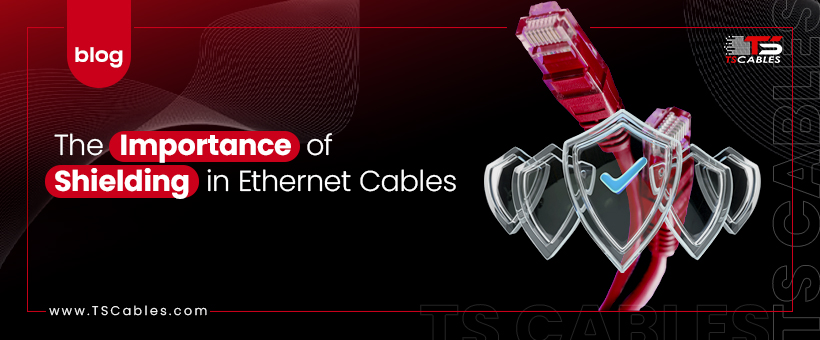- Your #1 Source for Network Cables. Call Now for Exclusive Offers!

In the rapidly evolving landscape of the digital era, the need for expeditious and steadfast In the rapidly evolving landscape of the digital era, the need for expeditious and steadfast internet connections has become an incessant pursuit. As we transition into a world dominated by digital interactions, our daily routines, work, entertainment, and communication are increasingly reliant on the Internet. This digital transformation underscores the importance of robust and reliable connections. The Ethernet cable, often overlooked, is the unsung hero in this digital age, ensuring that our devices communicate efficiently. Learn more about the evolution of digital connectivity.
Every Ethernet cable is a marvel of engineering designed to transmit data at lightning speeds. However, without proper shielding, these cables are susceptible to interference, which can degrade the quality of the transmitted signal. Shielding, therefore, is not just an added feature but a necessity to ensure that our online experiences remain seamless. Discover the intricacies of Ethernet shielding.
At its core, shielding is a protective barrier designed to combat external interferences that can disrupt the flow of data within an Ethernet cable. Whether it’s from nearby electronic devices, other cables, or even radio waves, these interferences can degrade the signal quality and reduce transmission speeds. Shielding effectively acts as a suit of armor, protecting the data as it travels. Dive deeper into the mechanics of shielding.
Shielding is integral to the effective transmission of data across Ethernet cables. But not all shielding is created equal. Depending on the environment and the nature of the data being transmitted, different types of shielding offer varying benefits. Let’s further dissect the most common shielding types – UTP, FTP, and STP – and understand their individual strengths and applications.
Unshielded Twisted Pair (UTP)
Foiled Twisted Pair (FTP)
Shielded Twisted Pair (STP)
The Shielding Choice: Balancing Cost and Performance
While choosing the appropriate shielding for your Ethernet cable, it’s essential to balance the requirements of your environment with your budget. While UTP may suffice for a quiet home setup, an industrial environment might necessitate the robust protection of STP. As devices and networking needs become more complex, the importance of the right shielding will only grow.
Conclusion: Prioritizing Shielding for Seamless Connectivity
In a world where digital communication is king, the tiniest interference can disrupt operations, cause data loss, or even lead to security vulnerabilities. Shielding in Ethernet cables isn’t just about ensuring a clear signal; it’s about preserving the integrity, security, and efficiency of every bit and byte transmitted. As technology continues to grow and intertwine with our daily lives, making the right choice in Ethernet shielding with TSCables ensures that our connections remain clear, secure, and steadfast.
Beyond ensuring optimal data transmission, shielding plays a pivotal role in the longevity of the cable. A well-shielded cable is less prone to wear and tear from external factors, ensuring that the cable remains functional for longer periods. This not only provides value for money but also reduces the frequency of cable replacements, leading to less electronic waste. Learn about the importance of shielding in data integrity.
In environments teeming with electronic devices, the air is thick with electromagnetic waves. Data centers, industrial setups, and even some modern offices fall into this category. In such places, the choice of cable can mean the difference between a stable connection and frequent network dropouts. Shielded cables thrive in these conditions, providing consistent performance even in the face of overwhelming interference. Discover the benefits of shielded cables in challenging environments.
In sectors like finance, healthcare, and defense, data integrity is paramount. A minor error in data transmission can have severe consequences. Shielded cables, with their enhanced protection against interference, are the go-to choice for such critical applications. They ensure that data, whether it’s a financial transaction, a patient’s medical record, or classified information, is transmitted accurately and securely. Find out why critical industries trust shielded cables.
Choosing the right Ethernet cable is more than just a technical decision; it’s an investment in reliability and performance. While unshielded cables like Cat 5e might suffice for less demanding applications, environments that require uninterrupted performance will benefit from the enhanced protection offered by shielded cables like Cat 6 or Cat 6A. As our world becomes more interconnected, ensuring the quality of those connections becomes paramount. Get guidance on choosing the right cable for your needs.
Copyright © 2024 TS Cables – All Rights Reserved
